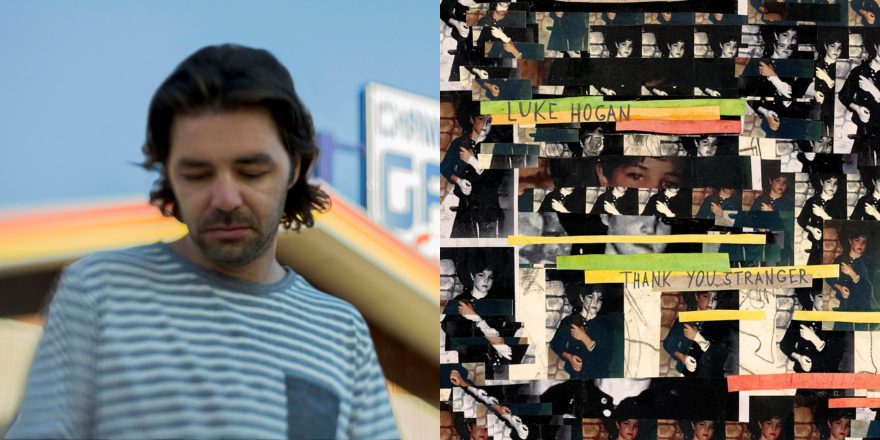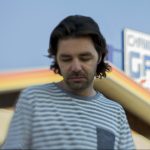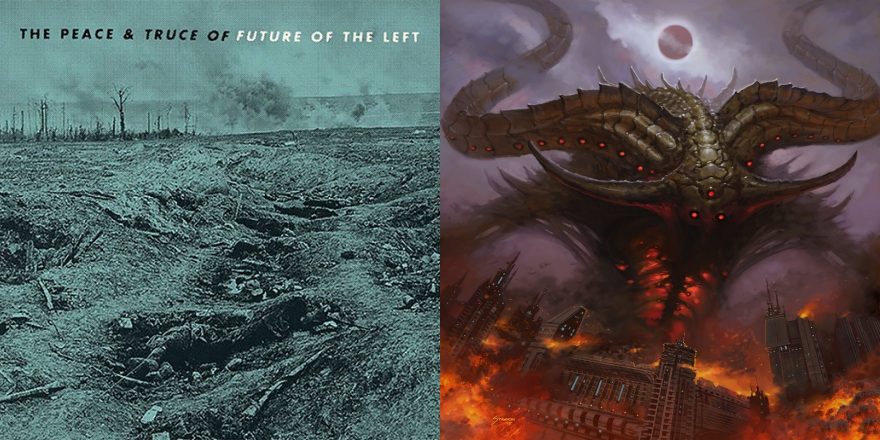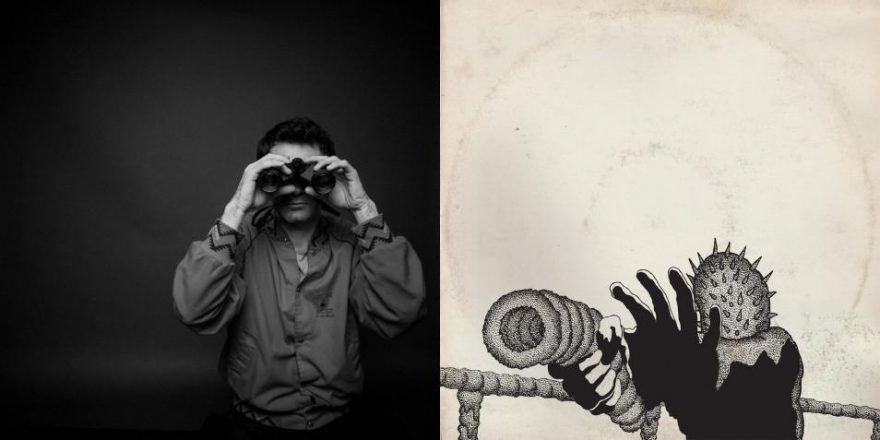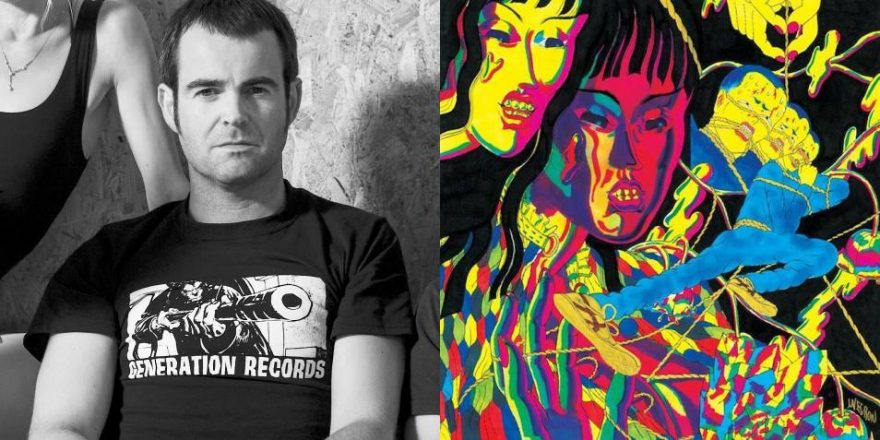Thank You Stranger is my first full length solo record. It was recorded, engineered, and produced by Tomas Dolas at Studio 22 in the Cypress Park neighborhood of East Los Angeles. We used almost four full reels of ½ tape, tracking close to 30 different songs in various arrangements, sometimes three or four different versions of the same song.
Tomas and I (under supervision from his lovely wife, Sofia) built Studio 22 together over the course of a couple months in the spring of 2016, each of us trading our skills for the other’s; in exchange for my labor and carpentry experience, Tomas produced my record. This album was financed by blood, sweat, and gasoline, and I couldn’t be happier with what we created. I consider myself immensely lucky to have gotten to work with such a gifted producer, and I am eternally grateful to all my friends who showed up and contributed their talent and time to these songs.
Most of these songs were arranged in the studio; we would generally start by tracking acoustic guitar, then the vocals, and make it up from there. Most people do their drums first and vocals last, but to me it’s always made sense to start with the song as it was written.
“Windowpane”
This one arrived pretty much fully written; the chords and lyrics came easier and more naturally than any other song I’ve written so far. It took me a long time to figure out that this song wasn’t really the love song that it appears to be upon first listen — I think it’s more about the relationship I had developed with the city of Los Angeles. After crashing on couches, subletting, and living out of my truck for a while, I had kinda forgotten what it was like to have my own place or home. For about 15 months between early 2016 and mid-2017, I moved almost every two or three weeks. The chorus in this song tries to get at how it feels at night when everyone else seems to be comfortably settled at home and in life and you keep finding yourself in a perpetually temporary situation.
“Playing with Fire”
… Was the first song I wrote after relocating to Los Angeles in early 2016. I was crashing at a friend’s place in Sherman Oaks and this song popped up one morning while I was trying to figure out how I could avoid getting another job and be able to play music. The original version of this song had a very different feel; it was a fast finger picking pattern more suitable to a solo performance. We tracked that one, and Tomas had the idea to switch up the feel to the more upbeat, Dylan-esque vibe you hear now. It took a little while to get used to the new feel, but it’s nice to have a couple different ways to play this one.
“Razorwire”
I had this one really long, drawn-out relationship where I seem to remember all our fights and serious conversations occurring on long car rides. In the painful and awkward silences in between exchanges, I’d always notice the tiniest little sounds would feel like they were taunting you, challenging you to fill the space with something meaningful to smooth out whatever the issue at hand was. In particular, I always noticed if the the blinker, or directional signal was on, it just had this persistence to it that was particularly unrelenting, it seemed to get louder every time, like Chinese water torture. That’s my favorite line in this song: “The directional’s click…” I always wonder if people know what I’m talking about when they hear it, or if it doesn’t make any sense to anyone but me. Kind of like a, “the silence is deafening” type of thing.
“Neon”
My friend Jon (he plays under the name Jonny Kosmo) helped produce this one — he has made numerous invaluable contributions to my songs over the years. It was his idea to play the chords in the straight, palm-muted fashion you hear on this version. Originally, the song had a looser strumming pattern. This one was really fun to work on. We spent a ton of time messing with all the tones — the idea was that if you were to “touch” this song, you’d get shocked. I think Tomas and I spent close to four hours messing with pedals for the lead guitar line that comes in after the second chorus. The buzzing, whirring sounds that come in and out was my friend Buck hitting the strings of a stand-up piano with a mallet, recorded backwards. It’s kind of a dark song, about anxiety and how it can permeate into every little crack or seam of your being, and follow you wherever you go.
“Sunset Seven”
… Is a song about a made-up band. I always thought it would be a cool band name, but didn’t really have a band at the time (this song is older, from 2012 or so), so I just made it into a song instead. Jonny Deadringer is the front man, and I always imagine the show described in the song taking place in a dark, smoky bar. There’s definitely a theme of alienation permeating this song, a feeling common to many artists relative to the rest of the world. The line “The song writes the singer… closing in on the chords that strike just too deep,” is trying to get at how having creative or artistic tendencies can be both a blessing and a curse; it’s a beautiful gift in the end, but it’s inescapable and comes with a cost, whether it’s addiction, depression, or a combination of many things like that.
“Paper Thin”
… Is my favorite song on the record. I took some time one day just to track a few new songs I had written; I wasn’t really planning on putting them on the album, I guess I just wanted them on tape for the future. Tomas really liked the opening line, and wanted to work some more on it. He had the idea to put a faster finger picking part over the original chords — I remember barely being able to play it, but we got it down and went from there. He played the cellos, and we made some sandpaper blocks with some stuff from the back of my truck.
“Can You Love Her”
I’ve often felt as if the quality of my lyrics deteriorates as my songs go on, as in the first and second verses are stronger than the third and fourth. On this one in particular, I really tried to push a little harder, past the first thing that came to mind, and write something I’d be looking forward to singing as the song went on. I was mentally exhausted by the time it was done. I just kept thinking, “You can do better…” but I’m glad I stuck with it. The imagery in the third verse (“I’m staring at a ghost…”) pretty much sums up what this song about: a current relationship that is perhaps being haunted by some leftover feelings for someone else from the past. It was kind of a harrowing experience really digging to the bottom of what I felt and wanted to say; this one took more out of me than any of the previous songs I’d written.
“Where Are You Tonite”
This song is about an old girlfriend; we ended things years ago and haven’t spoken or seen each other since. It was one of those relationships that had to be all or nothing — we couldn’t be friends if we weren’t going to be together. At least from my perspective. Every once in a while, the memories resurface and I can’t help but wonder what she’s up to, just on a very basic, day-to-day level, given we’re both still here somewhere, staring at the same sun.
“Wishing Well”
I’ve been putting off writing about this one until it’s the only one left, and I’m not quite sure why. For some reason, it’s the most difficult song on this record to describe what’s it about. I know that I wrote it as a relationship I was in was starting to deteriorate — one that ended amicably — and I think we both wanted it to work, but we were just more different than we were willing to admit to each other. We weren’t able to say what we really wanted because we knew that if we did, it would mean the end. I suppose this song is trying to get at how that feels — trying to communicate when you can’t say what you mean for fear of the consequences.
“Nothing Special”
This is one of the first songs I ever wrote. In fact, I think it’s just about the same age as I was when I wrote it back in high school. It’s kinda just hung around over the years; I’ve played it with a few different bands, and I’ve always had particularly mixed feelings about whether it’s any good, or whether I like it or not. I thought it would be cool to end the album with a bit of a wild card, so we tried to make this one as dark and sinister as we could. The lyrics are just kind of an overall description of how I felt at the time: terribly out of place, angsty, etc. Pretty typical teenager stuff.
(Photo Credit: left, Callie Bowen)



